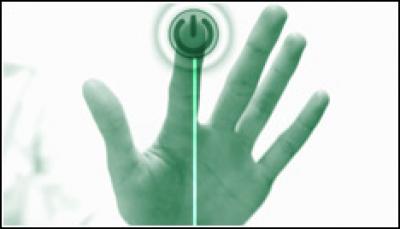The Bluetooth Special Interest Group (SIG) has revealed that version 4.0 of the open wireless protocol is now “ready to roll”, including a low-energy option intended for linking low-power devices.
Low Energy For Wider Applicability
The most notable development with Bluetooth version 4.0 is a low energy mode that should allow for its use in personal health, home security, sport and fitness, as well as home entertainment systems.
“Bluetooth v4.0 throws open the doors to a host of new markets for Bluetooth manufacturers and products such as watches, remote controls, and a variety of medical and in-home sensors,” said Michael Foley, executive director of the Bluetooth SIG.
“Many of these products run on button-cell batteries that must last for years versus hours and will also benefit from the longer range enabled by this new version of the Bluetooth specification,” he added.
The Bluetooth SIG states that “Bluetooth v4.0 is like three specifications in one – Classic Bluetooth technology, Bluetooth low energy technology, and Bluetooth High Speed technology.” Apparently all three versions can be combined or used separately in different devices according to their functionality.
The new version follows from Bluetooth version 3.0, launched last year, which added an option for fast communications making use of Wi-Fi links under the control fo the Bluetooth module.
Typical Applications
So what applications does the Bluetooth SIG think that version 4.0 will be suited for? Well, for a start it is touting its applicability for both the healthcare and fitness markets, for use in sensors found in pedometers (a step counting device) or glucose monitors, which only work with low energy technology.
Another option that could take advantage of the low energy technology are watches collecting data from fitness sensors on the body.
Better Range?
The Bluetooth SIG was also keen to point out that like previous versions of the specification, the range of the Bluetooth v4.0 radio may be optimised according to application. Currently, most Bluetooth devices on the market today offer a 30 foot or 10 metre range, but apparently with the version 4.0 specification, “manufacturers may choose to optimise range to 200 feet and beyond, particularly for in-home sensor applications where longer range is a necessity.”
 What is not clear at this time is how low the actual energy consumption version 4.0 really is, but presumably it would depend on the volume of data being sent, or the distance it has to be carried.
What is not clear at this time is how low the actual energy consumption version 4.0 really is, but presumably it would depend on the volume of data being sent, or the distance it has to be carried.
There is little doubt that Bluetooth has had its critics over the years, who said that the standard would die off many years ago. However it seems at least one analyst is convinced by the new evolution of the standard.
“The low energy feature of Bluetooth v4.0 is truly groundbreaking,” said Nick Jones, senior wireless analyst, Gartner. “At Gartner, we identified it as the top mobile technology to watch for in 2010 primarily because of its ability to smash open the barriers to new markets for Bluetooth technology and consumer electronics device manufacturers. We’re excited to see this one hit the market.”
The Bluetooth v4.0 specification was first introduced in December, but the Bluetooth SIG says that samples of sensors utilising this specification are available from some silicon manufacturers today.
The actual integration of low energy wireless technology within the Bluetooth specification should be finished by the end of June and consumer devices featuring Bluetooth 4.0 will launch in between late 2010 and early 2011, for those companies which decide to implement it.




